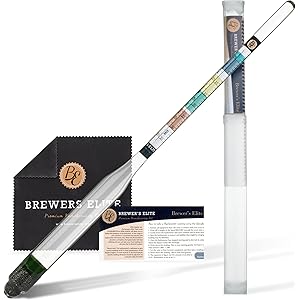Understanding Fermentation
Fermentation is a metabolic process that converts sugar to acids, gases, or alcohol using microorganisms such as yeast or bacteria. This process can occur in the absence of oxygen, leading to various products depending on the type of fermentation. Understanding the role of oxygen in fermentation is crucial for anyone interested in brewing, baking, or producing fermented foods.
Does Fermentation Require Oxygen?
The question “does fermentation require oxygen” is often debated among enthusiasts and professionals alike. The answer largely depends on the type of fermentation being discussed. For instance, alcoholic fermentation, primarily carried out by yeast, occurs anaerobically, meaning it does not require oxygen. In contrast, some bacteria involved in lactic acid fermentation can utilize oxygen but do not require it for their metabolic processes.
Anaerobic vs. Aerobic Fermentation
Anaerobic fermentation is the process that occurs without oxygen. This is the most common form of fermentation, especially in the production of alcoholic beverages and certain foods like sauerkraut and kimchi. On the other hand, aerobic fermentation involves oxygen and is less common. It can lead to different end products, such as vinegar, which is produced by acetic acid bacteria when oxygen is present.
The Role of Yeast in Fermentation
Yeast plays a pivotal role in fermentation, particularly in alcoholic fermentation. Saccharomyces cerevisiae, the most commonly used yeast in brewing and baking, thrives in anaerobic conditions. When oxygen is scarce, yeast converts sugars into ethanol and carbon dioxide. This process not only produces alcohol but also contributes to the flavor and texture of the final product.
Types of Fermentation Processes
There are several types of fermentation processes, each with unique characteristics and requirements regarding oxygen. Lactic acid fermentation, for example, is utilized by certain bacteria to convert lactose into lactic acid, often occurring in dairy products. This process can happen with or without oxygen, showcasing the versatility of fermentation pathways.
Get more content like this!
Sign up to receive updates and new terms first hand.
Factors Influencing Fermentation
Various factors influence the fermentation process, including temperature, pH, and the presence of oxygen. While some microorganisms thrive in oxygen-rich environments, others are inhibited by it. Understanding these factors is essential for optimizing fermentation conditions, whether for home brewing or industrial production.
Fermentation in Food Production
Fermentation is widely used in food production, enhancing flavors and preserving food. Products like yogurt, cheese, and pickles rely on specific fermentation processes that may or may not require oxygen. The choice of fermentation method can significantly impact the taste, texture, and nutritional value of the food.
Health Benefits of Fermented Foods
Fermented foods are known for their health benefits, including improved digestion and enhanced nutrient absorption. The presence or absence of oxygen during fermentation can influence the probiotic content of these foods. For instance, anaerobic fermentation tends to produce a higher concentration of beneficial bacteria, which can contribute to gut health.
Common Misconceptions about Fermentation
Many misconceptions surround the topic of fermentation, particularly regarding the necessity of oxygen. Some believe that all fermentation requires oxygen, while others think it is entirely anaerobic. Understanding the nuances of different fermentation types can help clarify these misconceptions and promote better practices in food preparation and preservation.
Conclusion on Oxygen and Fermentation
In summary, whether fermentation requires oxygen depends on the specific type of fermentation being conducted. While anaerobic fermentation is prevalent in many applications, aerobic processes also play a significant role in producing various fermented products. A deeper understanding of these processes can enhance both the quality and variety of fermented foods and beverages.




